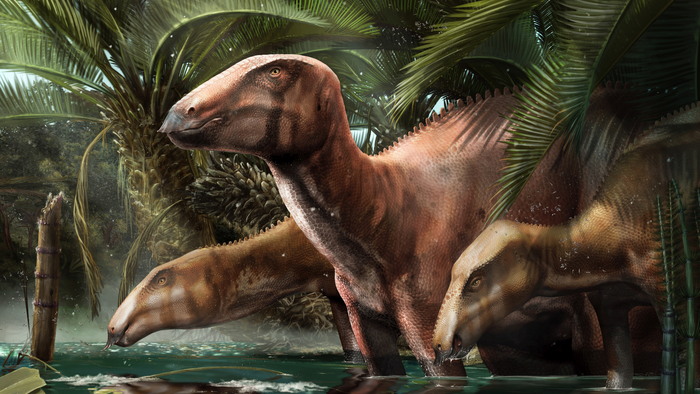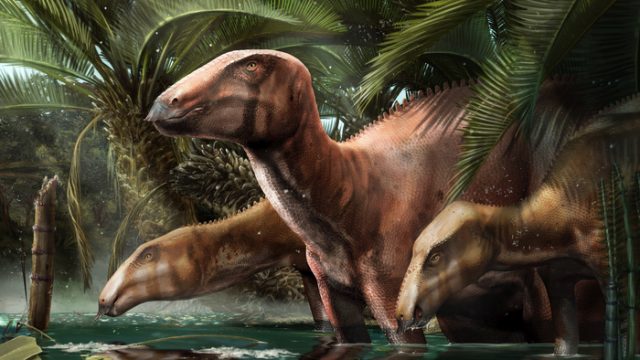
A study of dinosaur fossils found in northern Italy may overthrow assumptions about the Mediterranean region of millions of years ago, when islands and land bridges in a sea called Tethys were connected to mainland Europe. This is the first time multiple dinosaurs of the same species have been found together in Italy.
An international team coordinated by Federico Fanti of the University of Bologna found seven, or possibly eleven, individual dinosaurs, of which one is nearly complete, in Villaggio del Pescatore in northeastern Italy. They were discovered in a former limestone quarry, where the first isolated dinosaur remains were found in the 1990s.

Dinosaur fossils in Italy are rare. Between 230 and 66 million years ago, during the Cretaceous period when dinosaurs reigned over much of the Earth, the continents and oceans were not in their current positions. Much of the globe was covered by a proto-Mediterranean sea called Tethys, which was strewn with small islands, far from what eventually became Africa and Eurasia.
The mega-continents of Laurasia and Gondwana ultimately broke apart into the continents known today through the process of continental drift, over millions of years.
When scientists found the remains of a Tethyshadros insularis nearly 30 years ago, they were excited because of the relatively small size of the individual dubbed “Anthony.” Because the Villaggio del Pescatore site was believed to have been part of an island in the Tethys Ocean, some experts considered the skeleton to be a dwarf version of the species. The so-called “island rule” holds that dwarfism arises among animals living on small islands where there are fewer resources.
In a study published in Nature Scientific Reports, the team described a newly discovered individual Tethyshadros they named “Bruno” as well as at least six other skeletons of the same species. In addition, the team found fossilized fish, flying reptiles, crocodiles and crustaceans, offering a unique view of the region during the Cretaceous.


The new study determined that Antonio was not a dwarf but a youngster. The bigger Bruno was older but perhaps still growing when it died.
The team also gathered geological evidence that dated the site and its fossils to approximately 80 million years ago, during the Cretaceous period, making them approximately 10 million years older than previously believed. At that time, what is now northeastern Italy faced the immense Tethys Ocean but was connected to Asia and Europe. The study concluded that the region was not only characterized by islands but also offered land routes for large animals such as dinosaurs to migrate across land bridges that became modern Italy.
The Villaggio del Pescatore site is protected under Italian law. The fossils found there are on display at the Museum of Natural History in the city of Trieste.
Edited by Siân Speakman and Kristen Butler
The post Discovery Of Dinosaur Bones In Italy Offers New Insight Into Mediterranean 80 Million Years Ago appeared first on Zenger News.




